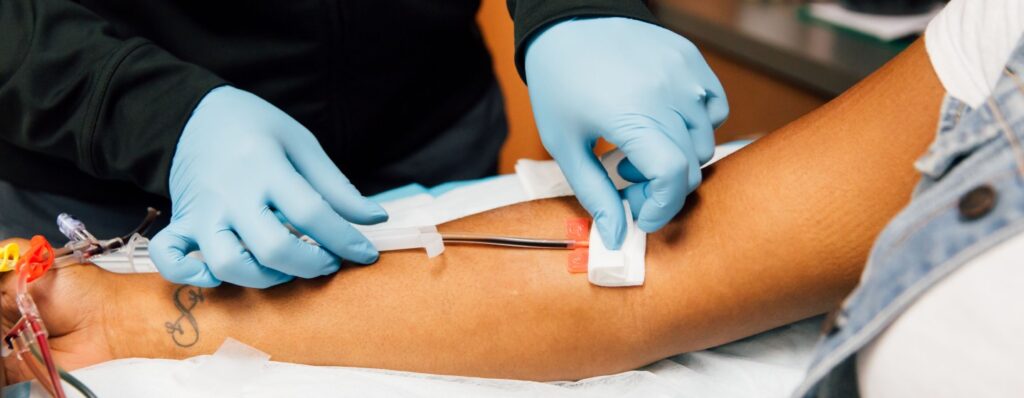
Peripheral Access Quick Guide
Tips and Tricks for Securing Peripheral Access
Prepare, prepare, prepare
Contact the donor and remind them to…
- Drink an extra 12 cups of water per day
- Limit caffeine
- Avoid alcohol
…while taking filgrastim
Be prepared for complications and know your plan if a central line is needed
On Day of Collection
- Warm body – hands & arms most important at least 5 minutes prior to securing access
- Heat up 250ml saline bags and have donor hold one bag in each hand
- Use tourniquet to identify vein with good diameter & depth
- Go after what you feel, not what you see
- Rotate palm/wrist to evaluate different vein position
- Always anchor vein when sticking with non-dominate thumb (pull away from antecubital area and press down)

Return Line
- Use 18 gauge peripheral IV over metal needle
- Placement – start distal and work up arm if needed
- 1st choice – hand, 2nd choice – wrist, 3rd – antecubital
- With tourniquet on, tap and rub area where veins are located to increase dilation
Access Line
- Use fixed metal backeye 16-18 gauge needle
- Use tourniquet and/or blood pressure cuff to add pressure
- Use pillows under arm to give support
- Try to use median cubital and cephalic vein
- After access obtained, loosen tourniquet and leave on for first 30 minutes
- Keep arm straight, outstretched, and cover with blanket
Troubleshooting
- If no blood return or unable to flush the lines, cannulation of the vein has not occurred. Restart.
- Monitor for signs of infiltration
- If vein cannot accommodate entire cannula, you can secure the partially inserted catheter with tape
- Do not force the catheter in
- If catheter can only partially advance and meets resistance, connect to IV fluids and advance catheter with fluids helping you pass into the vein
- Use blood pressure cuffinstead of tourniquet
- Double tourniquet, first Velcro and then non-latex over the Velcro
- Dangle arm off side of chair
Still having trouble?
Contact Transplant Medical Services at TMS@nmdp.org or contact via phone at 888-510-1808 or 763-406-4400
Download this Resource
Save this quick guide to share and/or print at your facility.
